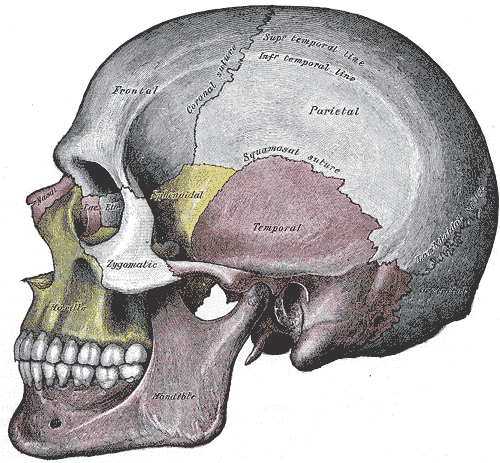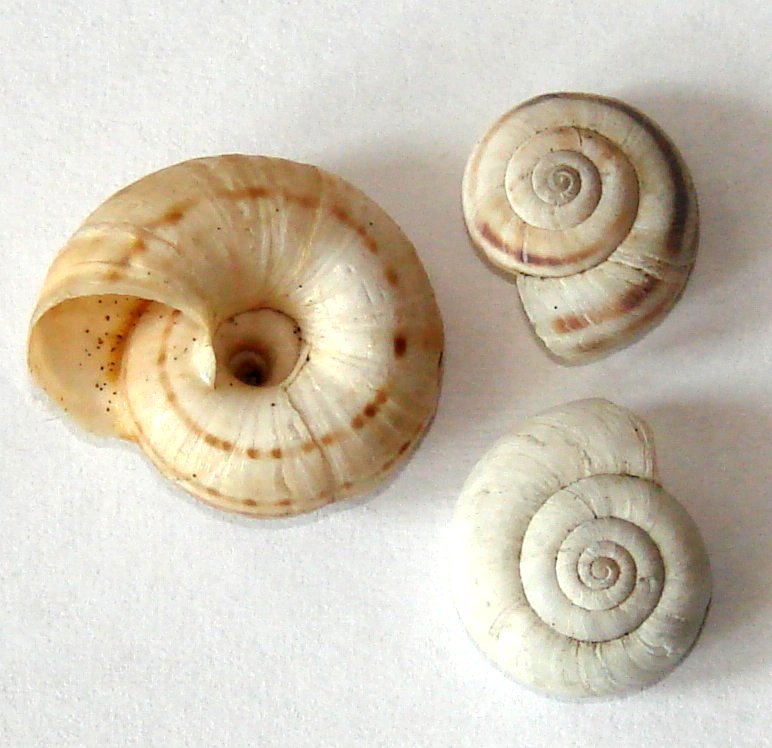|
Cyclostrema Supremum
''Cyclostrema supremum'' is a species of sea snail, a marine (ocean), marine gastropod mollusk in the family (biology), family Liotiidae.Bouchet, P. (2012). ''Cyclostrema supremum'' Melvill & Standen, 1903. Accessed through: World Register of Marine Species at http://www.marinespecies.org/aphia.php?p=taxdetails&id=701869 on 2012-12-03 Description The height of the shell attains 1.5 mm and its diameter 4 mm. The white shell has a plane-discoidal shape with 5 Whorl (mollusc), whorls. The species is beautifully cancellate and Sculpture (mollusc), sculptured, though more or less smooth below the periphery and around the narrow but deep Umbilicus (mollusc), umbilicus. The whorls are all channeled at the Suture (anatomy), sutures, very distinct (seen with a lens) on the two apical whorls. The penultimate whorl contains one keels and the body whorl three keels. The oblique Aperture (mollusc), aperture is oval. Distribution This species occurs in the subtidal zone of the Persi ... [...More Info...] [...Related Items...] OR: [Wikipedia] [Google] [Baidu] |
Species
In biology, a species is the basic unit of Taxonomy (biology), classification and a taxonomic rank of an organism, as well as a unit of biodiversity. A species is often defined as the largest group of organisms in which any two individuals of the appropriate sexes or mating types can reproduction, produce Fertility, fertile offspring, typically by sexual reproduction. Other ways of defining species include their karyotype, DNA sequence, morphology (biology), morphology, behaviour or ecological niche. In addition, paleontologists use the concept of the chronospecies since fossil reproduction cannot be examined. The most recent rigorous estimate for the total number of species of eukaryotes is between 8 and 8.7 million. However, only about 14% of these had been described by 2011. All species (except viruses) are given a binomial nomenclature, two-part name, a "binomial". The first part of a binomial is the genus to which the species belongs. The second part is called the specifi ... [...More Info...] [...Related Items...] OR: [Wikipedia] [Google] [Baidu] |
Sculpture (mollusc)
Sculpture is a feature of many of the shells of mollusks. It is three-dimensional ornamentation on the outer surface of the shell, as distinct from either the basic shape of the shell itself or the pattern of colouration, if any. Sculpture is a feature found in the shells of gastropods, bivalves, and scaphopods. The word "sculpture" is also applied to surface features of the aptychus of ammonites, and to the outer surface of some calcareous opercula of marine gastropods such as some species in the family Trochidae. Sculpture can be concave or convex, incised into the surface or raised from it. Sometimes the sculpture has microscopic detailing. The term "sculpture" refers only to the calcareous outer layer of shell, and does not include the proteinaceous periostracum, which is in some cases textured even when the underlying shell surface is smooth. In many taxa, there is no sculpture on the shell surface at all, apart from the presence of fine growth lines. The sc ... [...More Info...] [...Related Items...] OR: [Wikipedia] [Google] [Baidu] |
Persian Gulf
The Persian Gulf ( fa, خلیج فارس, translit=xalij-e fârs, lit=Gulf of Fars, ), sometimes called the ( ar, اَلْخَلِيْجُ ٱلْعَرَبِيُّ, Al-Khalīj al-ˁArabī), is a mediterranean sea in Western Asia. The body of water is an extension of the Indian Ocean located between Iran and the Arabian Peninsula.United Nations Group of Experts on Geographical NameWorking Paper No. 61, 23rd Session, Vienna, 28 March – 4 April 2006. accessed October 9, 2010 It is connected to the Gulf of Oman in the east by the Strait of Hormuz. The Shatt al-Arab river delta forms the northwest shoreline. The Persian Gulf has many fishing grounds, extensive reefs (mostly rocky, but also coral), and abundant pearl oysters, however its ecology has been damaged by industrialization and oil spills. The Persian Gulf is in the Persian Gulf Basin, which is of Cenozoic origin and related to the subduction of the Arabian Plate under the Zagros Mountains. The current floo ... [...More Info...] [...Related Items...] OR: [Wikipedia] [Google] [Baidu] |
Subtidal
The neritic zone (or sublittoral zone) is the relatively shallow part of the ocean above the drop-off of the continental shelf, approximately in depth. From the point of view of marine biology it forms a relatively stable and well-illuminated environment for marine life, from plankton up to large fish and corals, while physical oceanography sees it as where the oceanic system interacts with the coast. Definition (marine biology), context, extra terminology In marine biology, the neritic zone, also called coastal waters, the coastal ocean or the sublittoral zone, refers to that zone of the ocean where sunlight reaches the ocean floor, that is, where the water is never so deep as to take it out of the photic zone. It extends from the low tide mark to the edge of the continental shelf, with a relatively shallow depth extending to about 200 meters (660 feet). Above the neritic zone lie the intertidal (or eulittoral) and supralittoral zones; below it the continental slope beg ... [...More Info...] [...Related Items...] OR: [Wikipedia] [Google] [Baidu] |
Aperture (mollusc)
The aperture is an opening in certain kinds of mollusc shells: it is the main opening of the shell, where the head-foot part of the body of the animal emerges for locomotion, feeding, etc. The term ''aperture'' is used for the main opening in gastropod shells, scaphopod shells, and also for '' Nautilus'' and ammonite shells. The word is not used to describe bivalve shells, where a natural opening between the two shell valves in the closed position is usually called a '' gape''. Scaphopod shells are tubular, and thus they have two openings: a main anterior aperture and a smaller posterior aperture. As well as the aperture, some gastropod shells have additional openings in their shells for respiration; this is the case in some Fissurellidae (keyhole limpets) where the central smaller opening at the apex of the shell is called an orifice, and in the Haliotidae (abalones) where the row of respiratory openings in the shell are also called orifices. In gastropods In some pros ... [...More Info...] [...Related Items...] OR: [Wikipedia] [Google] [Baidu] |
Body Whorl
The body whorl is part of the morphology of the shell in those gastropod mollusks that possess a coiled shell. The term is also sometimes used in a similar way to describe the shell of a cephalopod mollusk. In gastropods In gastropods, the body whorl, or last whorl, is the most recently formed and largest whorl (or revolution) of a spiral or helical shell, terminating in the aperture. It is called the "body whorl" because most of the body of the soft parts of the animal fits into this whorl. The proportional size of the body whorl in gastropod shells differs greatly according to the actual shell morphology. For shells in which the rate of whorl expansion of each revolution around the axis is very high, the aperture and the body whorl are large, and the shell tends to be low spired. The shell of the abalone is a good example of this kind of shell. The opposite tendency can sometimes create a high spire with very little whorl increase per revolution. In these instances ... [...More Info...] [...Related Items...] OR: [Wikipedia] [Google] [Baidu] |
Suture (anatomy)
In anatomy, a suture is a fairly rigid joint between two or more hard elements of an organism, with or without significant overlap of the elements. Sutures are found in the skeletons or exoskeletons of a wide range of animals, in both invertebrates and vertebrates. Sutures are found in animals with hard parts from the Cambrian period to the present day. Sutures were and are formed by several different methods, and they exist between hard parts that are made from several different materials. Vertebrate skeletons The skeletons of vertebrate animals (fish, amphibians, reptiles, birds, and mammals) are made of bone, in which the main rigid ingredient is calcium phosphate. Cranial sutures The skulls of most vertebrates consist of sets of bony plates held together by cranial sutures. These sutures are held together mainly by Sharpey's fibers which grow from each bone into the adjoining one. Sutures in the ankles of land vertebrates In the type of crurotarsal ankle which is fou ... [...More Info...] [...Related Items...] OR: [Wikipedia] [Google] [Baidu] |
Umbilicus (mollusc)
The umbilicus of a shell is the axially aligned, hollow cone-shaped space within the whorls of a coiled mollusc shell. The term umbilicus is often used in descriptions of gastropod shells, i.e. it is a feature present on the ventral (or under) side of many (but not all) snail shells, including some species of sea snails, land snails, and freshwater snails. The word is also applied to the depressed central area on the planispiral coiled shells of ''Nautilus'' species and fossil ammonites. (These are not gastropods, but shelled cephalopods.) In gastropods The spirally coiled whorls of gastropod shells frequently connect to each other by their inner sides, during the natural course of its formation. This results in a more or less solid central axial pillar, known as the columella. The more intimate the contact between the concave side of the whorls is, the more solid the columella becomes. On the other hand, if this connection is less intense, a hollow space inside the whorls ... [...More Info...] [...Related Items...] OR: [Wikipedia] [Google] [Baidu] |
Whorl (mollusc)
A whorl is a single, complete 360° revolution or turn in the spiral growth of a mollusc shell. A spiral configuration of the shell is found in numerous gastropods, but it is also found in shelled cephalopods including '' Nautilus'', '' Spirula'' and the large extinct subclass of cephalopods known as the ammonites. A spiral shell can be visualized as consisting of a long conical tube, the growth of which is coiled into an overall helical or planispiral shape, for reasons of both strength and compactness. The number of whorls which exist in an adult shell of a particular species depends on mathematical factors in the geometric growth, as described in D'Arcy Wentworth Thompson's classic 1917 book '' On Growth and Form'', and by David Raup. The main factor is how rapidly the conical tube expands (or flares-out) over time. When the rate of expansion is low, such that each subsequent whorl is not that much wider than the previous one, then the adult shell has numerous whorl ... [...More Info...] [...Related Items...] OR: [Wikipedia] [Google] [Baidu] |
Sea Snail
Sea snail is a common name for slow-moving marine gastropod molluscs, usually with visible external shells, such as whelk or abalone. They share the taxonomic class Gastropoda with slugs, which are distinguished from snails primarily by the absence of a visible shell. Definition Determining whether some gastropods should be called sea snails is not always easy. Some species that live in brackish water (such as certain neritids) can be listed as either freshwater snails or marine snails, and some species that live at or just above the high tide level (for example species in the genus '' Truncatella'') are sometimes considered to be sea snails and sometimes listed as land snails A land snail is any of the numerous species of snail that live on land, as opposed to the sea snails and freshwater snails. ''Land snail'' is the common name for terrestrial gastropod mollusks that have shells (those without shells are known .... Anatomy Sea snails are a very large group o ... [...More Info...] [...Related Items...] OR: [Wikipedia] [Google] [Baidu] |
World Register Of Marine Species
The World Register of Marine Species (WoRMS) is a taxonomic database that aims to provide an authoritative and comprehensive list of names of marine organisms. Content The content of the registry is edited and maintained by scientific specialists on each group of organism. These taxonomists control the quality of the information, which is gathered from the primary scientific literature as well as from some external regional and taxon-specific databases. WoRMS maintains valid names of all marine organisms, but also provides information on synonyms and invalid names. It is an ongoing task to maintain the registry, since new species are constantly being discovered and described by scientists; in addition, the nomenclature and taxonomy of existing species is often corrected or changed as new research is constantly being published. Subsets of WoRMS content are made available, and can have separate badging and their own home/launch pages, as "subregisters", such as the ''World List ... [...More Info...] [...Related Items...] OR: [Wikipedia] [Google] [Baidu] |
Liotiidae
Liotiidae is a family of small sea snails, marine gastropod mollusks in the clade Vetigastropoda (according to the taxonomy of the Gastropoda by Bouchet & Rocroi, 2005).Gofas, S. (2013). Liotiidae Gray, 1850. Accessed through: World Register of Marine Species at http://www.marinespecies.org/aphia.php?p=taxdetails&id=196896 on 2013-09-07 Description The head of the animal is proboscidiform. The epipodial line has a pair of conical lobes and three pairs of cirri. The white shell has a turbiniform or discoidal shape. It shows longitudinal ribs or is clathrate. The shell shows a fine lamellar sculpture. The circular aperture is feebly nacreous. The thick peristome is continuous and shows a callous varix. The multispiral operculum is hispid, corneous and has a soft, calcareous outer layer (intritacalx) formed of pearly beads that are disposed spirally. Taxonomy 2005 taxonomy The family Liotiidae belongs to the superfamily Turbinoidea, according to the taxonomy of the G ... [...More Info...] [...Related Items...] OR: [Wikipedia] [Google] [Baidu] |









.jpg)